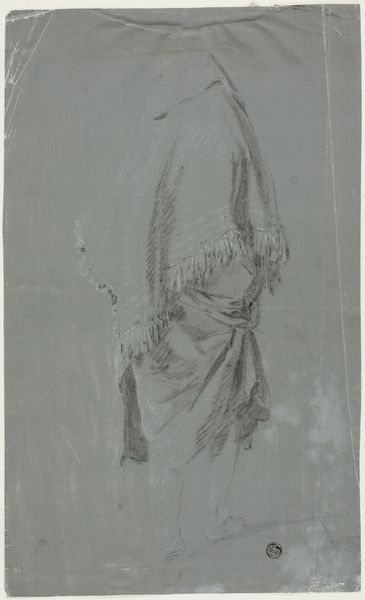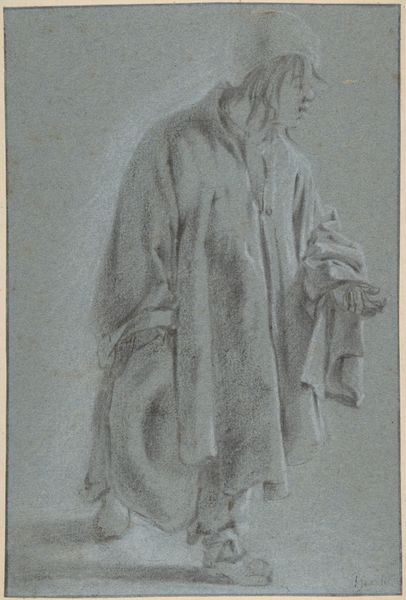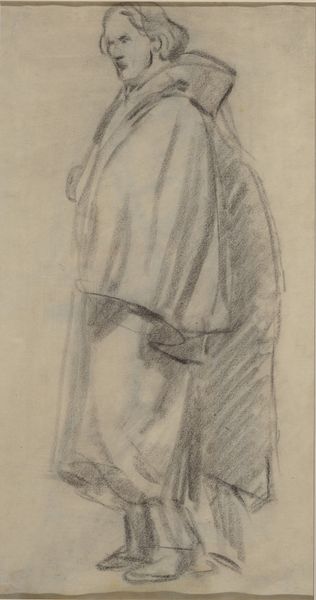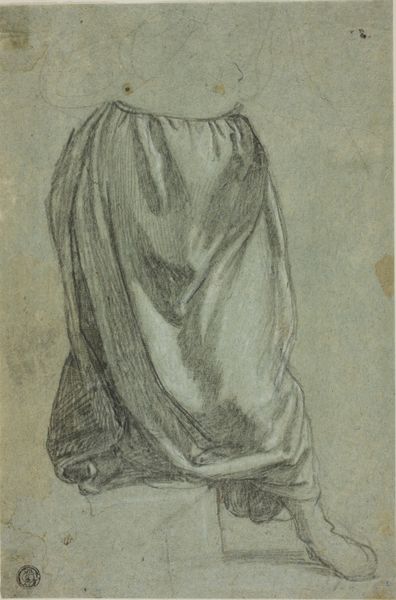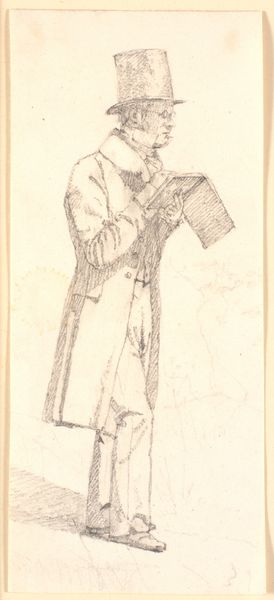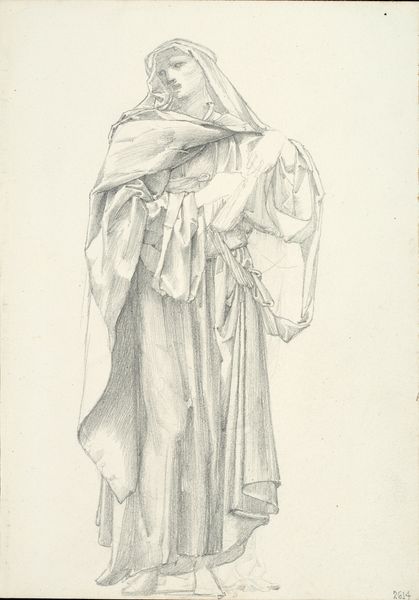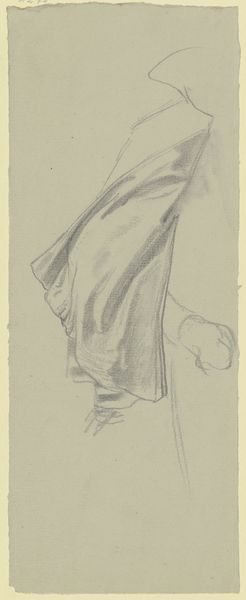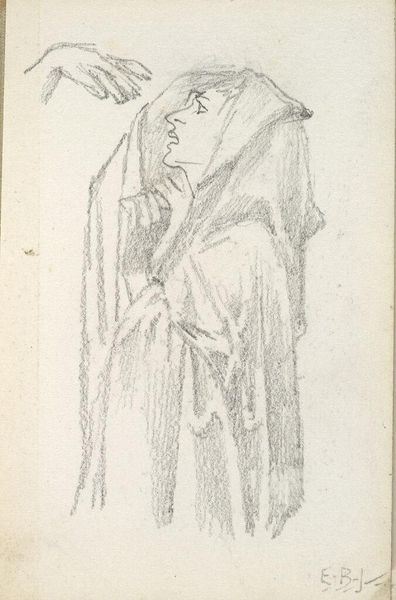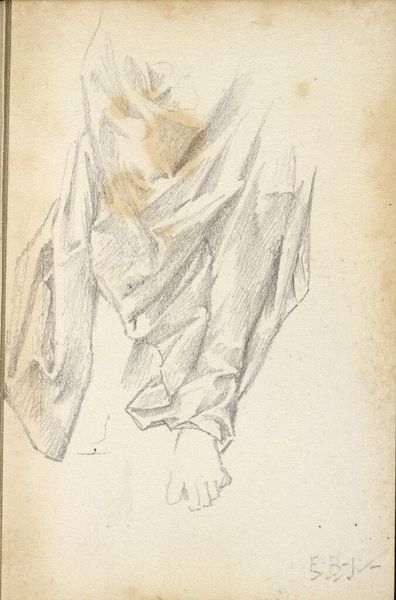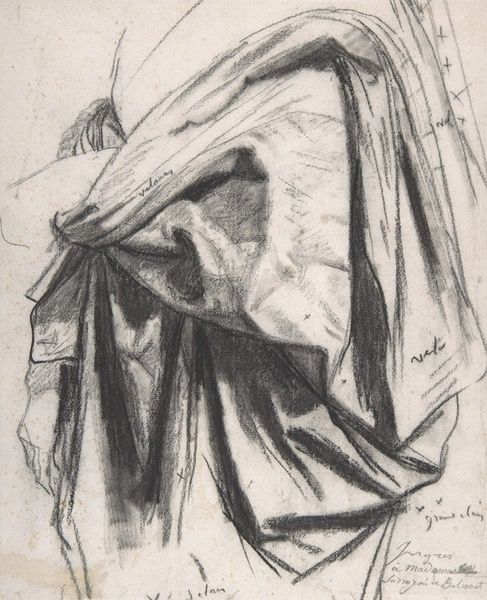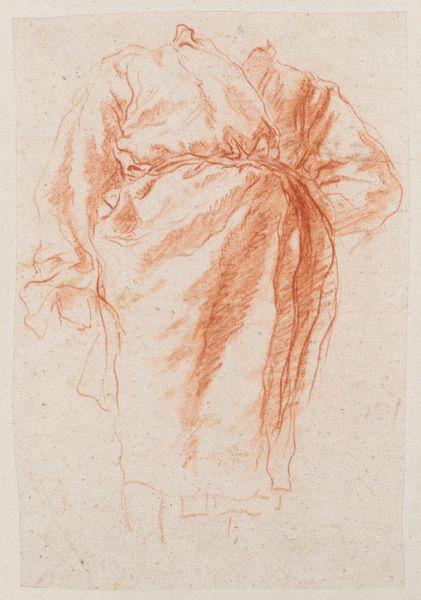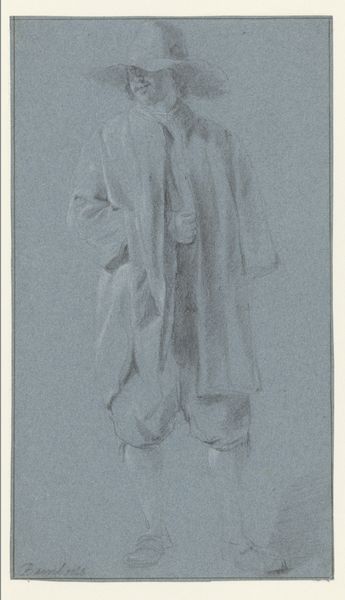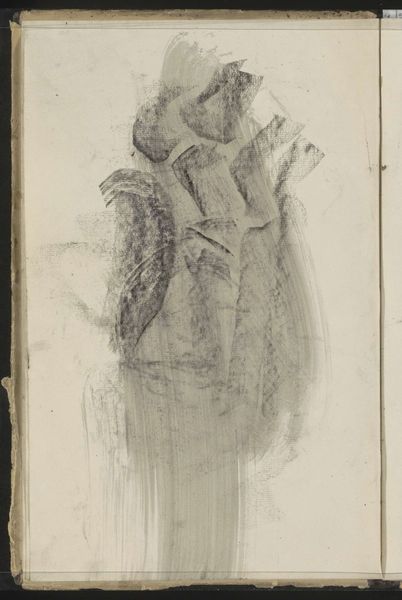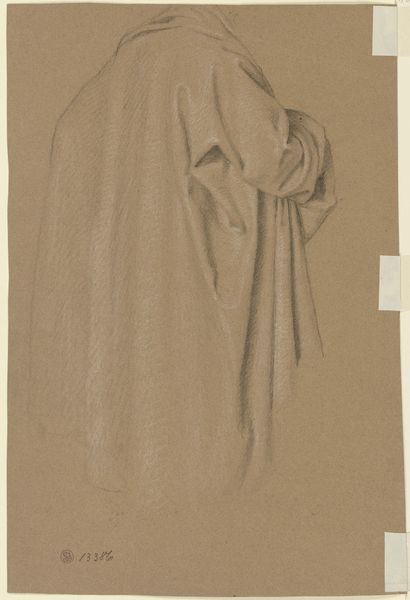
drawing, pencil
#
portrait
#
drawing
#
pencil sketch
#
figuration
#
pencil drawing
#
romanticism
#
pencil
#
portrait drawing
#
academic-art
Dimensions: 7 15/16 x 3 13/16 in. (20.16 x 9.68 cm)
Copyright: Public Domain
Editor: So, here we have François-Claudius Compte-Calix's "Sketch of a Woman," created sometime in the 19th century using pencil. The flowing lines of the dress really strike me – they almost look like water. How do you interpret this work? Curator: It's interesting you see fluidity. Consider the historical context. This piece reflects the Academic art tradition of the time, focusing on formal study. While appearing spontaneous, the "sketch" aesthetic was carefully constructed. Think about the role of women and their representation in art during this era. Does this image reinforce or challenge those social norms? Editor: It feels like it reinforces them, maybe? She’s idealized but also distant, almost anonymous because of how sketchy it is. I mean, we can’t really see her face or expression. Is that a commentary on the role of women, too, like being seen but not known? Curator: Precisely. These portraits often reflected the societal constraints placed upon women, highlighting decorum and appearance over individuality. Now, consider the medium, pencil on paper. It's a quick study, maybe for a larger painting. But was it intended for public consumption? Editor: Maybe not? I guess, was it just an exercise for the artist, or did sketches like these circulate among certain social circles? Like, were they the Instagram of the 19th century? Curator: That's an astute observation! The accessibility of sketches, especially portraits, provided a medium of exchange amongst particular classes and communities. Think about how access to imagery, then as now, dictated participation in specific dialogues and reinforced societal expectations. Editor: That makes so much sense. I hadn't really considered who got to *see* art, beyond who it depicted. Curator: Exactly! By considering the broader context, the artist's intention, and the original audience, we unlock a much richer understanding of seemingly simple sketches. Editor: I’ll definitely look at art differently from now on! It's not just what is depicted, but who gets to see it and why. Curator: Indeed. It's a constant negotiation of social forces and individual expression.
Comments
No comments
Be the first to comment and join the conversation on the ultimate creative platform.
